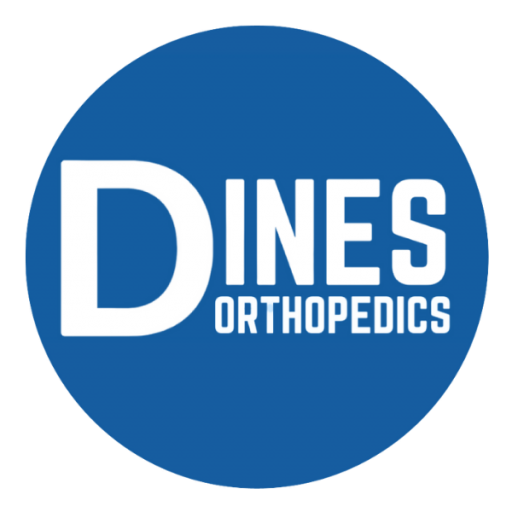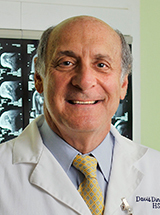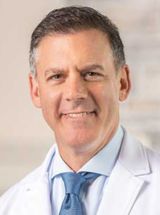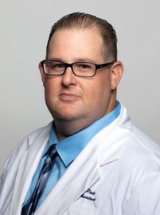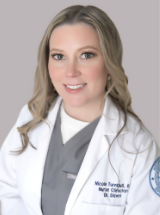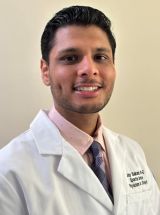David Dines, MD, has built his practice based on decades of clinical experience and research focusing on the shoulder and related injuries. He is the Medical Director for the ATP World Tennis Tour and has operated on thousands of shoulders throughout his career while publishing many of the most important research articles and textbooks on shoulder surgery.
Joshua Dines, MD provides a full range of Sports Medicine services, including surgical and non-surgical treatments for injuries to the shoulder, knee, and elbow. He works with the NY Mets and NY Rangers as well as college athletes, high-school athletes, weekend warriors, and those patients just looking to get back to performing their everyday activities without pain. Together, Dines Orthopedics offers offices in two convenient locations in New York City at Hospital for Special Surgery and in Uniondale Long Island, offering their patients surgical and non-surgical options in both locations.
At Dines Orthopedic, we understand how important it is to maintain healthy elbows. Your elbows serve various functions necessary for performing our simplest daily activities and our most complex movements. An elbow injury can potentially sideline you and negatively affect your quality of life. At Dines Orthopedic, we are well-versed in elbow injuries and are committed to helping you overcome them.
Our Upper East Side Elbow Specialists
Contact Us Today!
Elbow Reconstruction Surgery
Are you an active athlete who is experiencing intense pain in your elbow and the region around it? We understand the frustrations of rehabilitating an injury with little progress. You may need an Elbow Ligament Reconstruction to ensure that the injury heals properly and does not cause further damage in some severe cases. Ligament construction is a procedure standard for over-hand athletes, and when you need an orthopedic surgeon, you can trust Dines Orthopedics.
Dines Orthopedics is here for you and all your needs; we have the best Elbow Specialist UES NYC. Contact us today so we can set up a consultation for you! Let’s be on the road to recovery together!
Understanding Elbow Ligament Reconstruction
An “Elbow Ligament Reconstruction” surgery is utilized to repair a torn ligament inside the elbow. The surgery replaces the torn ligament with a tendon from the body. The purpose of the surgery is to bring stability, reduce pain and restore range of motion. If a patient left an elbow ligament injury untreated, it could lead to worse injury or permanently damage your arm.
Things to Keep in Mind 
- The most common injury is usually gradual
- Pain on the inside of the elbow is a common and direct sign of injury
- A stress test physical diagnoses these injuries to assess damage and instability
- Treatments plans vary per injury but that range from physical therapy to surgery
Possible Risks and Complications
Just like in any procedure or surgery, there are risks and complications to keep in mind. It is important to us that all our patients know the risks that can come with surgery. Transparency is essential to us, so we encourage you to take a moment to read some possible dangers. If you have any questions before your procedure, be sure to ask your Orthopedic Surgeon. Some risks include:
- Allergic reaction to the anesthesia
- Nerve damage
- Possible temporary or permanent numbness
How is the Procedure Performed?
This procedure is performed in under two hours, and you can usually return home the same day. It is a minimal procedure, so you won’t have to be out of commission for too long. Our team will ensure that you have a speedy recovery to return you to doing what matters most. For this procedure, there are three significant steps to the process:
- First, the doctor will harvest the graft, meaning finding a tendon to replace the torn elbow ligament. The graft can be taken from various locations; some common ones are:
- Longus tendon from the forearm
- Hamstring tendon
- Big toe extensor tendon
- Second, the doctor will then begin the cleaning out of the joint process. The doctor will move the muscles and other damaged tissues out of the way and determine the damage and course of action.
- Lastly, the doctor will secure the graft inside the below. This process consists of drilling holes into the bones between the torn ligament. Then, the graft tendon would go through these holes and secure but buttons, sutures, or screws.
Rehabilitation and After-Care:
Care after surgery is very important. After an elbow reconstruction surgery, there is typically a three-phase process:
- Phase one consists of wearing a 90-degree angle with the intent to protect the healing process and reduce inflammation.
- Phase two consists of moving and the elbow joint with the intent of increasing the range of motion.
- Phase three consists of full movement in the arm to remove the brace and regain normal range of motion.
Contact Our Elbow Specialist UES NYC
Surgery as a whole can be a very stressful and complicated process. We are here to provide you with the best care and treatment plan. With years of experience and knowledge, we at Dines Orthopedics are here for you and all your needs; we have the best Elbow Specialist UES NYC. Contact us today so we can set up a consultation for you! Let’s be on the road to recovery together!
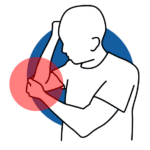
Elbow Conditions We Treat
Treating Golfers Elbow
Millions of Americans experience some form of elbow injury every year. Dines Orthopedics offers treatment for many of these injuries with our Elbow Specialist UES NYC. We can treat your elbow injury and help you get back to doing what you love. Elbow injuries are frequent among athletes and can be debilitating depending on your sport. For golfers developing an elbow injury could mean weeks staying off the course for weeks. If you believe you have developed golfers elbow contact Dines Orthopedics today.
What is Golfers Elbow?
One of the most common injuries our Elbow Specialist UES NYC treats is medial epicondylitis, also known as golfers’ elbow. People who suffer from medial epicondylitis experience pain in the inner aspect of the elbow.
They may also experience pain or weakness in their wrist flexion and forearm pronation. Medial epicondylitis can also affect your daily activities, such as pouring a drink or shaking someone’s hand.
Although the name could give off the
impression that it only affects golfers, it can happen to anyone who overuses their forearm. Tennis players are prone to getting medial epicondylitis rather than lateral epicondylitis. For golfers, medial epicondylitis occurs when they play golf too much. The condition can also happen to golfers based on poor form. Medial epicondylitis is a widespread elbow injury that can affect one who overuses the muscles. Let’s take a look at the symptoms of and how golfers’ elbows can be treated.
Symptoms for Golfers Elbow
The leading cause for golfers’ elbow is usually the overuse of the muscles that help you grip, rotate your arm, and flex your wrist. It’s common for golfers to experience medial epicondylitis due to the repetitive swinging, flexing, and gripping. These repetitive motions can cause tears or pulls in the arm’s tendons. Some examples of typical symptoms for golfers elbow are:
- Pain and tenderness felt in the inner side of the elbow
- Feeling of stiffness in your elbow
- Hand and wrist weakness
- Experiencing numbness or tingling
These symptoms can also be mistaken for other conditions such as cubital tunnel syndrome, ulnar collateral ligament, or ulnar neuritis. That’s why it’s essential to see a physician, so you can get an accurate diagnosis for the symptoms. Our Elbow Specialist UES NYC can help give the proper diagnosis for your symptoms.
Treatment for Golfers Elbow
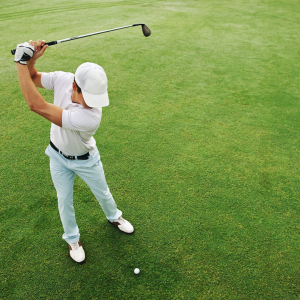
Treatment for golfers’ elbows usually involves conservative treatment most of the time. The most essential step to recovering from golfers’ elbow is ending the activity that’s causing the injury. An example would be a golfer or tennis player who would have to stop playing their sports to heal. An adequately structured physical therapy program that focuses on stretching and strengthening the muscles is essential for the golfers’ elbow treatment process. When the golfer or athlete experiences zero pain in their muscles after the treatment process, they must slowly return to their sports to avoid the elbow’s overuse.
In some cases, the injury could be more chronic. In some cases, specifically acute cases, some may rely on the usage of cortisone injections. Cortisone injections can help ease the pain for the injury; however, the injections’ benefits are not for the long-term recovery. The injections may also cause some adverse side effects. An example of these side effects is making the tendon more prone to tearing if more injections are administered. There are two last treatment options for people who did not use physical therapy for treatment or have a more chronic case. The first treatment option is the usage of platelet-rich plasma. Platelet-rich plasma injections do not provide the same adverse side effects that cortisone injections cause. If platelet-rich plasma injections do not work for the patient, they will most likely undergo surgery.
The surgery is not long, and the patient would be home the same day of the procedure. The surgery consists of a small incision removing the torn tendon’s degenerate piece and repairing the tendon to help the elbow get back to its healthy state. After the surgery, the patient is usually kept in a splint for a week and then placed into physical therapy the following week. For athletes, they would most likely return to their sports within three months after the surgery.
Elbow Specialist UES NYC
Are you experiencing any symptoms of golfers’ elbows? Are you suffering from golfers’ elbows and need treatment? At Dines Orthopedics, we offer some of the best elbow injury treatments from our Elbow Specialist UES NYC. To learn more about our services, visit our website here.
Tommy John Surgery
Sports injuries are extremely common and debilitating. Ligaments are torn, bones are broken, and you can be sidelined for up to months at a time. Today, we’ll be focusing on a particular sports injury affecting many baseball players out there, the Ulnar Collateral Ligament (UCL) tear. Thankfully, Tommy John’s surgery can help get you back in the game. Here at Dines Orthopedics, we specialize in sports medicine treatments, with Tommy John surgery being one of our specialties. For an Elbow Specialist UES NYC, give us a call!
What is Your UCL?
Ligaments are bands of tissue that hold your bones together, control your joints, and are extremely strong. They tether your body together, and excessive movement or overextension can tear them. A tear in your ligament can take away your ability to move that joint effectively, sidelining you from a sport. Not to mention it can be extremely painful.
The UCL is located on the inside of your elbow and is attached to bones in your upper arm and forearm. It’s a complex ligament consisting of three bands, the anterior, posterior, and transverse! How exactly do you injure it?
A UCL injury can develop from repeating stress to your elbow or trauma to the area. Anybody can develop a UCL tear over time, but athletes required to throw it have it the most dangerous. The motions that twist your elbow to throw a ball put a lot of stress on your UCL. It can develop tears of varying sizes and degrees, which can impede your ability to throw. This injury commonly develops on baseball players, with over 10% of all baseball players having undergone Tommy John Surgery, but it’s not limited to this.
Other sports activities where UCL injuries commonly occur are;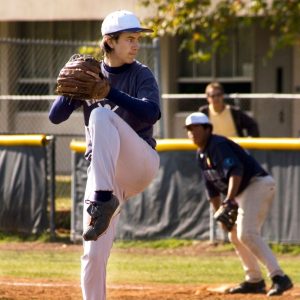
- Javelin throw
- Tennis
- Gymnastics
- Soccer
- Football
- Wrestling
- Cheerleading
You might not expect some of these to appear on the list, but it’s something to take very seriously!
Symptoms of a UCL Injury
You should consult a doctor if you experience any of the following symptoms;
- Pain on the inside of your elbow
- Your elbow feels loose or unstable
- Your “funny bone” is tingling
- You can’t throw a baseball or anything else very well
- Popping noise in your elbow
- Tingling or numbness in your pink and ring fingers
In rare cases, UCL injuries interfere with your day-to-day life, but you are sure to be wary of any elbow pain you might feel. In some cases, UCL injuries are diagnosed through a physical examination or through X-Ray and MRI.
Treatment
Treatment depends on the severity and your desires. UCL repair surgery should be on the table if you’re an athlete and want to return to your former glory. Nonsurgical treatment is pretty standard. You let your elbow rest, take anti-inflammatory medication, apply ice daily, and go to physical therapy. You have to train the muscles in your arm to compensate for the torn ligament, but you won’t be able to throw like you were before. This is where UCL reconstruction surgery comes in, or Tommy John Surgery.
Elbow Specialist UES NYC
Named for the former Los Angeles Dodgers pitcher Tommy John, the first person to undergo this procedure in 1974. Tommy John’s surgery is where your injured UCL is replaced with a tendon taken from somewhere else in your body. It can let athletes return to their original level of play. The tendon can be taken from your wrist, forearm, toe, hamstrings, hip knee, or even your foot. It can also be donated from another, which is the case in some surgeries. The tendon (graft) is passed through tunnels drilled into your arm and woven around to reconstruct the ligament. Your original tendon is then attached to the graft for maximum strength. Nerve damage is the most common complication. The procedure takes about an hour to complete but much longer to recover from.
Rehabilitation from the procedure usually takes a year. It can take up to 5 months before you’re allowed to toss a ball lightly and can return to pitching after nine months. 90% of the cases have successful outcomes, which is a lifesaver for this sport!
Contact Our Elbow Specialist UES NYC
At Dines Orthopedics, we specialize in Tommy John’s surgery and many other procedures to keep you in the game. Don’t hesitate to give us a call for any of our orthopedic procedures and services, especially for Elbow Specialist UES NYC.
Patient Testimonials
